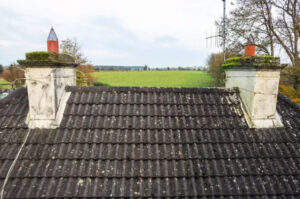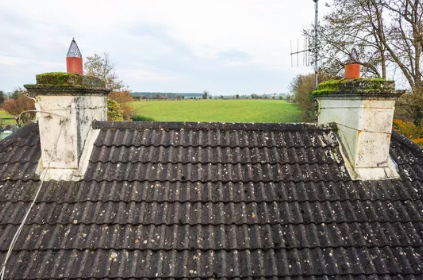 Your chimney should be swept at least once every year. Ideally, you should hire someone to sweep it in the fall before the fireplace season.
Your chimney should be swept at least once every year. Ideally, you should hire someone to sweep it in the fall before the fireplace season.
Before the chimney sweep arrives, you should clear off the area around the fireplace and move furniture that could get knocked over. A professional will set up a work zone with tarps to prevent soot and creosote from falling on your living areas. They also use a dual HEPA filter vacuum to keep dust levels low. Contact Chimney Sweep Clean now!
A reputable chimney sweep should provide cleanliness that meets or exceeds industry standards. Chimney sweeps use many tools, including brushes and scrapers, to remove creosote from flue tiles and other areas of the chimney structure. These tools, combined with a dust mask and safety goggles to protect the eyes and lungs, should leave your chimney and surrounding area looking almost new. They should also take the time to carefully set up drop cloths and plastic covering the floor around the fireplace and a powerful vacuum with dual HEPA filters to keep dust levels low in your home.
A chimney sweep is also qualified to conduct a Level One Inspection, which includes a visual check of the chimney for damage and structural soundness. During this process, the chimney sweep will also look for any future issues that could become fire hazards and should alert you to those problems. A professional will also be able to recommend what maintenance and repairs are needed and provide a bid for those services during the cleaning and inspection.
The National Fire Protection Association (NFPA) recommends that chimneys be swept when there is a 1/8″ creosote buildup. However, this can be difficult for a homeowner to determine. Creosote is a highly flammable liquid and can cause chimney fires, which can be dangerous for the family and pets and damage the home.
Some companies sell creosote sweeping logs, which claim to loosen the thick layer of grungy creosote that collects on fireplace flue walls and is hard to clean. They also say that these logs reduce the new creosote that builds up, making a fire safer. Unfortunately, while they may help a little, these logs cannot completely prevent the combustible liquid from clogging the chimney and can still result in a fire.
While the NFPA and some chimney sweeps recommend that you schedule a sweep after every other fire, getting your chimney swept regularly is far better. It is not uncommon for a chimney to be cleaned more than once yearly, especially if you use the fireplace often or burn a lot of wood.
When a chimney is swept, the sweep scrapes away the coating, or creosote, that has built up on the chimney lining from many fires. This consists of black, sticky stuff that can be toxic and clog a chimney. A chimney sweep will usually start at the fireplace and work their way up, or begin on the roof and do both; ideally, they will use a dual HEPA filter vacuum to keep dust levels down.
A clean chimney will prevent animals from building nests inside and prevent water from entering the flue through cracks. It will also help to maintain optimum draft for efficient heating. It will also reduce foul odors caused by the accumulation of soot and creosote. Chimney sweeps can also see any damage, cracks, or deterioration in the chimney and make repairs as needed.
One of the biggest health benefits of having a chimney sweeper is that it helps protect your family from carbon monoxide poisoning. A chimney that is clogged with creosote and soot will block gases from escaping, which can then be forced back into living areas where they can kill your family members. A chimney sweep will ensure that gases like carbon monoxide have a clear path to escape, keeping your home healthy and safe.
Another major benefit of chimney sweeping is that it can help to save your home from fire damage. A clean chimney will prevent fires from starting in the fireplace, which can then spread to other parts of your house. This can lead to costly structural damage and serious health risks for you and your family. Chimney sweeps will remove any debris and soot and scrape out the flue, which can help stop a chimney fire from occurring.
It is important to remember that a chimney should be cleaned when it has a 1/8-inch layer of buildup. This can be difficult for homeowners to gauge, so it is crucial to call a chimney sweep when you notice this amount of flammable material.
The National Fire Protection Association (NFPA) reports that house fires often begin in dirty fireplaces and chimneys. This is because soot and creosote buildup blocks smoke venting, causing the fire to grow out of control. The risk of a chimney fire is greatly reduced when the chimney sweep removes these buildups regularly. The NFPA recommends that homeowners hire a qualified, professional chimney sweep who is CSIA-certified for inspection and cleaning services. A chimney sweeper will also have a business liability insurance policy to protect you and your property in case of an accident or damage while working.
Before the chimney sweep begins their work, they’ll need clear access to your home’s fireplace and chimney area. You’ll need to move any items blocking the chimney or fire grate and cover the floor with plastic or a drop cloth. They’ll also need room for their various tools and equipment and a vacuum with a dual HEPA filter to keep the dust level low.
Having a clean chimney also makes it easier for the sweeper to conduct an inspection. A heavily encrusted chimney with soot and creosote is more difficult to examine, as these materials can conceal important areas like the damper and smoke shelf from view. This can hinder the chimney sweep’s ability to determine whether a serious problem is present, such as a crack or gap in the flue liner.
Once the chimney sweep is finished, they’ll carefully dispose of any accumulated debris and clean up the area around your fireplace. This includes the fireplace grate and any soot and creosote particles that may have fallen onto your furniture or carpets. Removing these contaminants ensures that the indoor air remains cleaner and helps minimize respiratory problems, such as coughing and sneezing, caused by inhaling soot particles.
The chimney sweep will also check the damper and smoke chamber for any snags or obstructions needing removal. You should schedule a chimney inspection and cleaning service every other year or as soon as your fireplace and chimney show signs of being overdue for a sweep.
Chimney sweeps are trained to spot problems that could lead to costly chimney repairs. For example, chimneys are exposed to rain and wind elements that can wear away at the masonry. Having a chimney sweep inspect your chimney regularly can help you avoid structural damage that could cost thousands to repair. In addition, sweeping a chimney regularly helps prevent creosote buildup. This highly flammable material can cause chimney fires, destroying homes and killing pets and wildlife.
Regular chimney sweepings can also save you money on energy bills. A chimney clogged with soot loses its ability to properly vent smoke and gases, making your fireplace less efficient. A reputable chimney sweep can fix air leaks and ensure your flue is the right size for your fireplace, reducing your heating costs.
The best way to find a trustworthy chimney sweep is to ask friends and neighbors for recommendations. You can also search online for a local sweep with a good reputation. Once you have found a few candidates, compare their prices and services. Choose a chimney sweep with years of experience and who offers references from previous clients. Ensure they have liability insurance coverage in case of unexpected damage to your home or roof during the chimney sweep process.
When hiring a chimney sweeper, you should pay special attention to their certifications and memberships in professional organizations. They should be able to provide proof of insurance before they begin the job. They should also be able to explain their work and give you an estimate of how long the job will take. Additionally, they should minimize debris spilling into your home during cleaning and cleaning afterward.
The cost of a chimney sweep depends on the type of fireplace and its condition. Gas, pellet, and wood-burning fireplaces require different maintenance schedules and cleaning methods than traditional brick chimneys. Chimney sweepings for wood-burning fireplaces typically cost $85 to $250, while pellet and gas fireplaces are less expensive at about $175 to $350.
